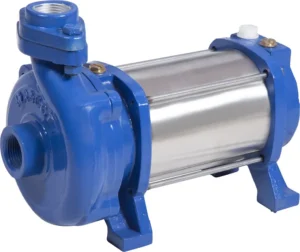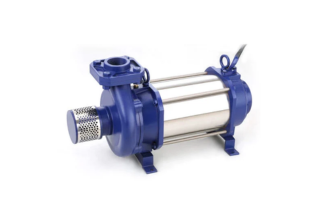What Is a Well Pump and How Does It Work?

Roughly 45 million Americans get their water from a well. Dissimilar to city water, well water isn’t treated with chlorine or chloramine by the region. All things being equal, it is occupant on property holders to channel and cleanse their well water before utilization or use. Be that as it may, to consider well water to enter a home, a well siphon should be introduced to push water starting from the earliest stage into a home’s pipes. Well siphons consider a predictable progression of water into a home while making the interaction as energy effective as could be expected. At the point when it comes time to introduce a well siphon, numerous mortgage holders wonder which well siphon is great for their framework. Underneath you can find data on what well siphons are, the manner by which they work, the sorts of well siphons, and how to pick the right well siphon for your property.
What is a well pump?
A well pump is a device that pulls or pushes water from a well into a well storage tank. It can be installed in the residence, an outbuilding, or the well itself, depending on the type of pump. Impellers in a submersible pump take water in and push it up a pipe, whereas impellers in jet and centrifugal pumps create suction that pulls water up from underground. Under certain conditions, each of these pumps performs better than the others and has a different startup and ongoing maintenance cost. Continue reading to learn more about these pumps.
How does a well pump work?
Well pumps can operate in one of two ways: by forcing water up a pipe or by sucking it up from below using suction. A well pressure switch that provides a signal to the pump whenever the water pressure within a well pressure tank rises or falls turns on well pumps. To increase the lifespan of the pump, the pressure switch allows it to run as little as feasible. A well pressure tank’s pump will turn on and start filling the tank when the water level inside the tank drops. The switch instructs the pump to shut off whenever the tank reaches a predetermined pressure upon filling. This guarantees that the pump only activates and deactivates as necessary, avoiding problems like overheating.
Types of well pumps
There are three main types of pumps used for wells: submersible, jet, and centrifugal.
Submersible well pumps
In the US, submersible well pumps are the most popular type of residential well pump. They are practicable in most well-types, which contributes to this in part. Installed inside a well, submersible pumps rely on the presence of water to completely submerge them. These pumps’ engines take water in and then propel it up a pipe and into a pressure tank using impellers. Due to their durability and watertightness, submersible pumps require less upkeep. The drive seals, which are vulnerable to corrosion from sand and other sediments, are the component of submersible pumps that sustain the most damage. The pump must be removed from the well for servicing when necessary. The additional labour expense needed for this procedure raises the overall maintenance cost of submersible pumps.
| Advantages of submersible pumps | Disadvantages of submersible pumps |
| Can be used in practically any well | More difficult and expensive maintenance |
| Energy efficient | Susceptible to corrosion in sand-rich wells |
| Durable | More expensive |
Jet well pump
Jet pumps run above the well and above the water. Both inside the house and in a special well house are options for installation. A well pressure tank can be filled with water using jet pumps and a suction line. Jet well pumps don’t get damaged by sand and other well sediments because they function outside of water, making them easier to maintain than submersible pumps. There are two variations of jet pumps: single-drop and double-drop.
Water is drawn from wells less than 25 feet deep using a single-drop jet pump, commonly referred to as a shallow well jet pump. The residence or an outbuilding must have these pumps installed interior. Even though some single-drop jet pumps claim to be “self-priming,” they nevertheless require manual priming after installation and after each power outage. Running a dry pump puts it at risk for overheating, which could lead to permanent damage.
A deep well jet pump, also known as a double-drop jet pump, has more diffusers and impellers than a single-drop pump. These devices utilise a jet injector that enables the suction of water from 110-foot-deep wells. Double-drop jet units are positioned inside the well while the impeller motor runs above ground, in contrast to single-drop jet pumps.
| Advantages of jet pumps | Disadvantages of jet pumps |
| Easy and less frequent maintenance | Less efficient as depth increases |
| Not susceptible to sand damage | Must be primed |
| Can be used for irrigation and gardening | Limited to wells shallower than 25 feet (single-drop) or 110 feet (double-drop) |
| Less expensive | Less energy efficient |
Centrifugal well pumps
Impellers take water into centrifugal pumps, which then expel it out an outlet using rotational energy. Due to their modest size, these pumps can only extract water from shallow wells. In order to ensure that there is enough power available to draw out water, wells deeper than 25 feet must be fitted with either a submersible pump or a double-drop jet pump. Because centrifugal pumps lack driving seals, corrosion from sand and other sediments cannot harm the machine. Centrifugal pumps are typically affordable and require little maintenance due to their corrosion resistance, similar to shallow well jet pumps. As a result, centrifugal pumps are a sensible choice for shallow wells.
| Advantages of centrifugal well pumps | Disadvantages of centrifugal well pumps |
| Inexpensive | Only useful in wells shallower than 25 feet |
| Simple and infrequent maintenance | |
| No corrosion risk |
Which type of well pump is right for me?
The depth of your well determines which well pump type is best suited for your home. For wells shallower than 25 feet, either a single-drop jet pump or centrifugal pump is the best option. For wells between 25 and 110 feet deep, a double-drop jet pump will provide the optimal pump power. Finally, for wells between 110 and 400 feet deep, a four-inch submersible pump should be installed. The size of your well pump is determined by the size of your home. The ideal well pump delivers water with appropriate pressure while maintaining an efficient run cycle.
How to size a well pump?
Calculate the gallons per minute needed at the busiest times for water use in your home to determine the right size well pump. Count the number of fixtures in your house to do this. Between each bathroom, laundry room, kitchen, other appliances and any outdoor spigots, a two-bathroom house normally has roughly 12 fixtures. For this hypothetical home, a common well pump size would be 8 to 12 gallons per minute (gpm). The operation and general effectiveness of your pump depends on having a well pump that is the right size. A pump that is too small will not be able to supply you with the water you need and is more likely to break down due to overuse. Because of its inefficiency, an oversized well pump can increase energy expenditures.
Your pump might not be able to produce the right amount of water during times of peak demand if the amount of water in a well is a worry. By integrating a sizable enough well pressure tank, this issue can be solved. When there is not enough water to draw from your well during peak times, a bigger storage capacity might assist your home get through those times.
How much do well pumps cost?
Submersible pumps are often more expensive than jet and centrifugal pumps, even without labour. Jet pumps normally cost between 32,903 and 98,711, while submersible pumps typically cost between 32,903 and 1,64,519. Centrifugal pumps only work in certain applications and cost between 8,225 and 41,129. The cost of most well pumps, including installation, ranges from 1,06,937 to 4,35,976. The type of pump being installed and the well depth have a significant impact on the price of the pump and its installation. Since they are utilised in deep well applications and must be installed close to the well’s bottom, submersible pumps often cost more to install. However, given that the majority of American wells are 100 feet or deeper, they are often the best investment for your well, despite their higher initial cost. Single-drop jet pumps and centrifugal pumps are the most inexpensive type of pump, while double-drop jet pumps account for the upper range of jet pump costs.
| Pump Type | Price Range |
| Submersible | 32,903-1,64,519 |
| Jet | 24,677-98,711 |
| Centrifugal | 8,225-41,129 |

